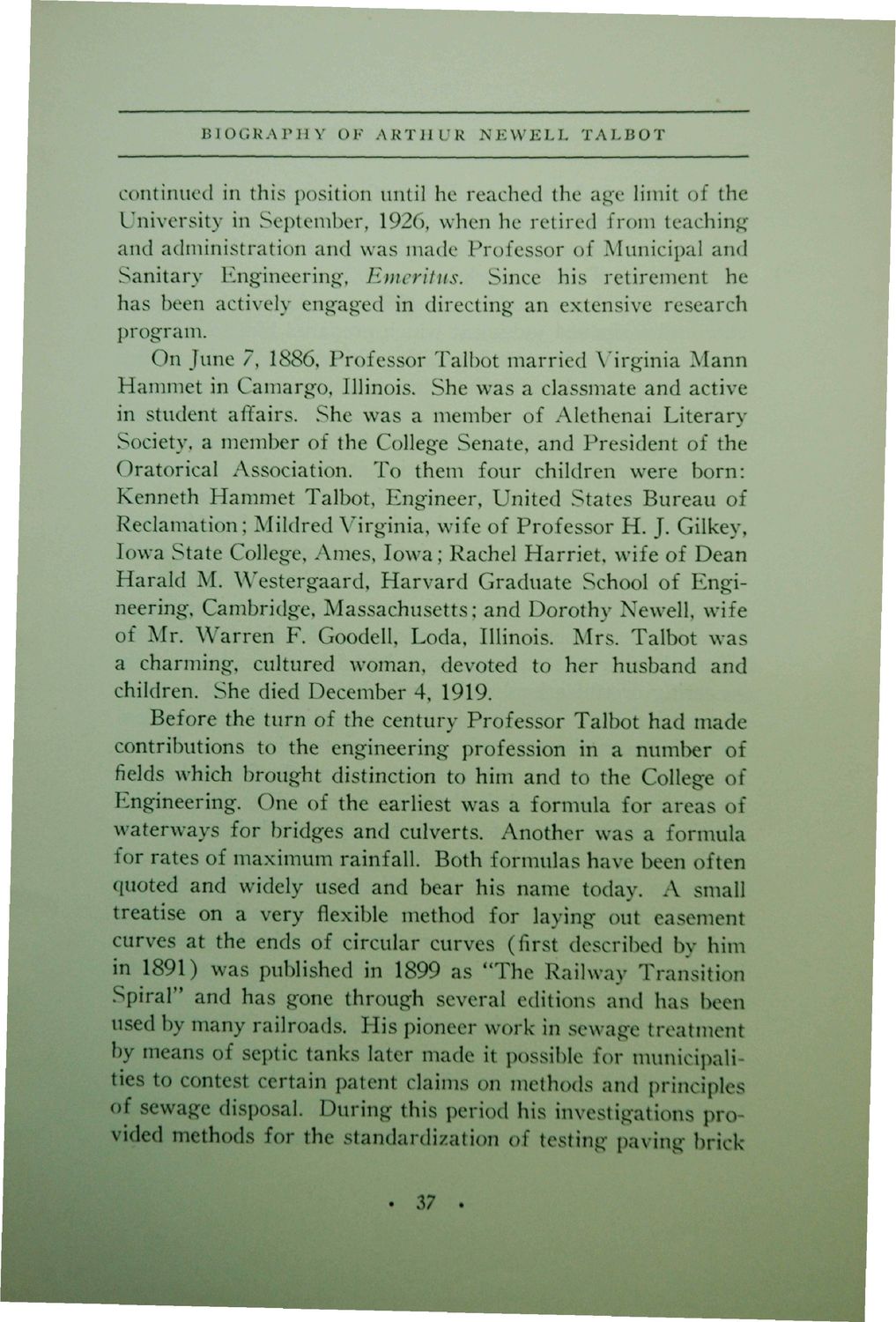| |
| |
Caption: Dedication - Talbot Lab
This is a reduced-resolution page image for fast online browsing.

EXTRACTED TEXT FROM PAGE:
BIOGRAPHY OF ARTHUR NEWELL TALBOT continued in this position until he reached the age limit of the University in September, 1926, when he retired from teaching and administration and was made Professor of Municipal and Sanitary Engineering, Emeritus. Since his retirement he has been actively engaged in directing an extensive research program. On June 7, 1886, Professor Talbot married Virginia Mann Hammet in Camargo, Illinois. She was a classmate and active in student affairs. She was a member of Alethenai Literary Society, a member of the College Senate, and President of the Oratorical Association. To them four children were born: Kenneth Hammet Talbot, Engineer, United States Bureau of Reclamation; Mildred Virginia, wife of Professor H. J. Gilkey, Iowa State College, Ames, Iowa; Rachel Harriet, wife of Dean Harald M. Westergaard, Harvard Graduate School of Engineering, Cambridge, Massachusetts; and Dorothy Newell, wife of Mr. Warren F. Goodell, Loda, Illinois. Mrs. Talbot was a charming, cultured woman, devoted to her husband and children. She died December 4, 1919. Before the turn of the century Professor Talbot had made contributions to the engineering profession in a number of fields which brought distinction to him and to the College of Engineering. One of the earliest was a formula for areas of waterways for bridges and culverts. Another was a formula for rates of maximum rainfall. Both formulas have been often quoted and widely used and bear his name today. A small treatise on a very flexible method for laying out easement curves at the ends of circular curves (first described by him in 1891) was published in 1899 as 'The Railway Transition Spiral" and has gone through several editions and has been used by many railroads. His pioneer work in sewage treatment by means of septic tanks later made it possible for municipalities to contest certain patent claims on methods and principles of sewage disposal. During this period his investigations provided methods for the standardization of testing paving brick • 37 .
| |